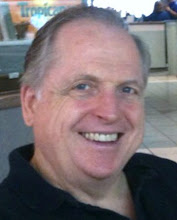Earlier this week, courtesy of VirtualU and Virtual Edge, I was a virtual participant in the Virtual Edge 2010 Summit. One of the presentations on the final day of the summit was Secrets Revealed from "Cisco Systems' Virtual Global Sales Meeting - GSX." The presenter was Angie Smith, from Cisco Systems, had a very engaging presentation including an "after-action" video describing the event and its success. In 2008 the Global Sales Meeting was live and the cost per person attending was about $4,500. In 2009 the Global Sales Experience (GSX) was virtual and the cost per person attending was about $385--a 90% savings.
Ratings for the 2008 event regarding the venue (on a scale of 5.0 being the highest rating) were 4.5. For 2009, the ratings dropped to 2.9 though people reported taking away the information they needed from the event.
The 2009 GSX event required participants to be at their computers for hours at a time and there was significant feedback to compress the time and to have more live interaction. (Blended events with some interactive virtual components happening asynchronously--before the actual event--can really enhance the potential for learning and applying new skills. If the event can be designed over a longer time, with both face time and virtual time planned for in "digestible chunks," the events may be more productive.)
One of the most exciting things about GSX 2009 was the "Threshold" alternate reality game based on a summer blockbuster video in 2009. The game was developed for Cisco and was wildly popular with leader boards, etc. (After 9/11/2001 I took time off from consulting to be a classroom teacher and worked with KidsCollege--a series of games that allowed students to earn points and be on leader boards by answering questions and playing virtual sports games. Students were wildly engaged in that work as well.)
For 2010, the event is being planned as a hybrid event (a combination of Virtual with live interaction at regional locations). In 2009 most of the presentations from key Cisco speakers were recorded--to insure against problems with live streaming. Feedback from participants has Cisco planning to do presentations in streaming mode in 2010.
Cisco has learned to emphasize what virtual can do and plans to merge both live and virtual to get the best of both. Sales meetings are traditionally for recognizing high performers and motivating sales for the next year--as well as introducing changes and innovations in the organization. Learning and training have not been a primary focus.
Planners for the 2010 GSX expect to have a "play book" for regional managers to use when convening the groups of people in their conference rooms to view the virtual events and a budget people can use locally to go to local restaurants, etc. for "motivating recognition dinners."
How this information helped me:
In earlier posts, I reported on ELACOMM98--a live, "hands-on learning" event I designed, developed, and delivered for 200 communications executives affiliated with a global consulting firm. I had the role of learning architect/project manager for the event. This was the second year I had replaced a Sales Meeting with a Learning Event for communications executives. (The first year was in 1997 at an event also held in Cannes, France.)
Cisco's event was larger and was a "Sales Meeting" rather than a learning event. At the same time, many of the challenges and goals and strategies were similar for the two events--with added insight from the virtual components.
As I begin planning Virtual Learning Events, I can take much of what I learned from designing, developing, and delivering the live events and add what has been learned from running Cisco's virtual experience.
Gaming is important and I need to learn much more about setting up an authentic, multilevel, alternative reality game that allows participants (learners) to apply what they are learning at the event to be more successful in the game--thereby making engagement with learning a key to successful performance in the game.
In designing learning events (live, virtual, hybrid, and blended), I have developed a strategy to follow that works well.
Thursday, February 25, 2010
Subscribe to:
Post Comments (Atom)




No comments:
Post a Comment
Thanks for your comments. They will appear on the blog shortly.